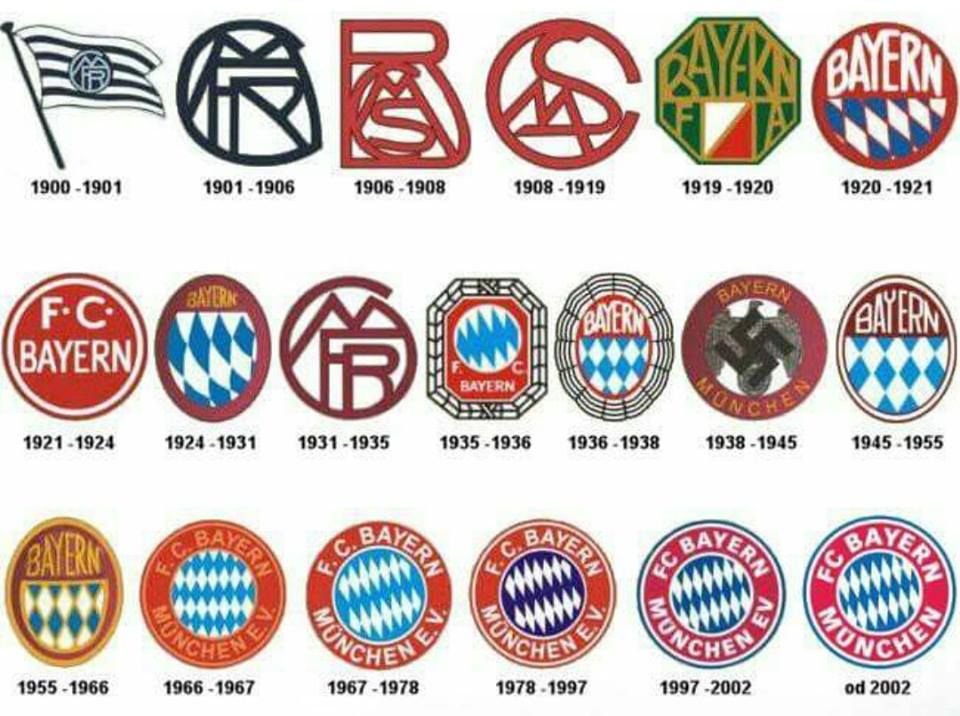Introduction: A Symbol Under Siege
The year 1939 marked one of the darkest chapters for Bayern Munich—not just on the field, but in its visual identity. Forced by the Nazi regime to alter its crest, the club’s logo became a tool of political coercion, reflecting Germany’s descent into fascism. This article explores the historical context, design, and legacy of Bayern’s 1939 emblem, a stark symbol of sport weaponized for propaganda.
Historical Context: Bayern in the Nazi Era
Political Persecution & Identity Erasure
Targeted as a “Jewish Club”
Due to its Jewish president Kurt Landauer and other Jewish members, Bayern faced systematic discrimination. The Nazis labeled it a “Judenklub” (Jewish club), leading to boycotts, membership declines, and national marginalization.
Purges and Exile
Landauer was imprisoned at Dachau in 1938 and fled to Switzerland in 1939. Coach Richard Kohn (also Jewish) was expelled, severing the club’s leadership.
The “Aryan Paragraph”
Nazi policies forced clubs to adopt racial purity clauses, erasing Bayern’s multicultural legacy.
Football Under Fascism
The regime manipulated sports for propaganda. Clubs were pressured to display loyalty—Bayern’s logo change was part of this broader intimidation campaign.
The 1939 Logo: Design and Symbolism
Forced Incorporation of Nazi Iconography
Swastika Integration
In 1939, Bayern was compelled to add the swastika (the Nazi Party emblem) to its crest, replacing or modifying traditional elements. This signaled enforced allegiance to the regime.
Suppressed Bavarian Identity
Pre-1939 logos featured Bavaria’s blue-and-white diamond pattern or the club’s red-and-white colors. The Nazi-era version subordinated these to state propaganda.
Design Evolution Table
| Period | Key Elements | Political Significance |
|---|---|---|
| Pre-1933 | Blue/white diamonds, red letters | Bavarian regional pride |
| 1939–1945 | Swastika, muted colors | Nazi compliance |
| Post-1945 | Restored diamonds, bold “FCB” | Rejection of fascist legacy |
Resistance and Resilience
Defiance Amidst Oppression
Landauer’s Legacy
Despite exile, Landauer was awarded Bayern’s Silver Badge of Honour—a quiet act of defiance.
Artifact Preservation
Captain Conny Heidkamp and his wife hid the club’s pre-Nazi trophies during Allied bombings, safeguarding Bayern’s true heritage.
The “Silent No”
Unlike rivals like 1860 Munich (which embraced Nazism), Bayern resisted ideological assimilation. Players covertly honored Landauer during a 1933 match in Switzerland, risking retaliation.
Post-War Reckoning and Reclamation
Immediate Rejection of Nazi Imagery
In 1945, Bayern abandoned the swastika logo, reverting to pre-1933 designs. By 1954, a new crest debuted, symbolizing rebirth.
Landauer’s Return
Reinstated as president in 1947, Landauer led efforts to restore the club’s inclusive ethos. His leadership cemented Bayern’s moral recovery.
Legacy: Why the 1939 Logo Matters Today
A Cautionary Tale in Sports Branding
The 1939 emblem remains a case study in how authoritarian regimes exploit cultural symbols. Bayern’s subsequent transparency about this era—including museum exhibits and educational programs—highlights its commitment to historical accountability.
Contrast with Modern Identity
Today’s crest (red circle, blue diamonds, “FCB” monogram) consciously echoes pre-Nazi designs, rejecting 1939’s corruption of the club’s visual DNA.
Conclusion: More Than a Badge
Bayern’s 1939 logo was never just a design—it was a battlefield where ideology clashed with identity. Forced to bear the swastika, the club endured a violation of its spirit. Yet, its post-war revival, shaped by Landauer’s vision and fan resilience, transformed the crest into a symbol of moral courage. As Bayern states in its motto, “Mia san mia” (“We are who we are”): true identity can be suppressed, never erased.

